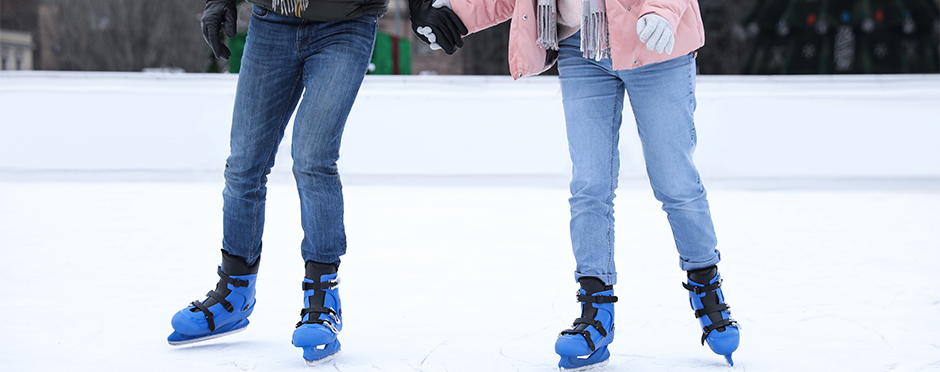
3 Common Winter Sports Injuries and How to Avoid Them
Leave a Comment“Hold my coffee.” Don’t let these be your famous last words before getting injured. Winter sports are amazing to watch; skiers and snowboarders traveling at high velocities and defying gravity when launching off jumps the size of houses. Figure skaters effortlessly glide, edge, and spin. All activities have risks, but the variables involved in winter sports can be out of our control, unfamiliar, and have higher stakes than what we are used to. This blog will cover tips, strategies, and more to keep you on the slopes and rink and out of the emergency room this winter.
Beware of Concussions
About 120,000 head injuries will occur this winter at our ski resorts in North America.1 Head injury could be anything from a severe traumatic brain injury (TBI) resulting in permanent neurological damage to a concussion or mild TBI. One of the simplest ways to reduce the incidence and severity of head injuries is to wear a properly fitting helmet. In the past, arguments had been made that the increased weight of a helmet may cause more neck injuries or cause a false sense of security and lead to increased risk-taking behavior. Both potential risks to helmet wearing have been debunked.2 When you’re on the slopes this year, remember to protect your head at all times by putting on a helmet.
Injuries to the Wrist
A wrist fracture is one of the most common injuries while ice skating, or even just from a slip on ice while walking. The typical mechanism of injury is falling on an outstretched hand.2 Our natural reaction to a loss of balance is often to reach for the ice in the direction of our fall. Still, to fall safer, it is often better to first lower our center of gravity by bending the knees, overriding the reaching reaction, and allowing yourself to slowly land on the ice with your larger body parts dispersing the force of the impact. Many injured individuals identified in a research study stated that it was their first-time ice skating or had very little experience ice skating when they fell and broke their wrist.2 For tips on how to fall correctly to prevent hand injuries, check out this blog. Many park districts and local rinks have lessons for children and adults. You may learn some new skills and reduce your risk of falling!
ACL Injuries
The most common injury in alpine skiing is an ACL sprain or rupture.2 To prevent injuries, ski centers have implemented training videos that show potential ways that an ACL injury can occur and make recommendations on how to avoid these positions. Researchers in Sweden at the Karolinska Institute added indoor and on-snow training exercises to an education program and saw a 45% ACL injury risk reduction in competitive adolescent skiers.3 The indoor exercises are common physical therapy tests: the single-leg hop, square hop, and the single-leg squat. The emphasis of the training and testing was obtaining equal strength and control on both legs. The ski drills include shuffling while turning, “the back and forth,” and turning with the inner ski lifted. You can find examples of these exercises and skiing drills here.
Stay Active This Winter
At Athletico, we hope that you continue to lead an active lifestyle throughout the winter and that some of these tips help reduce your risk of injuries. If you have trouble with your strength or stability in the tests mentioned above or in your day-to-day life, seek help from a physical therapist. Start by scheduling a Free Assessment where one of our experts can evaluate your functional strength, mobility, and balance and recommend a customized treatment program to fit your needs.
The Athletico blog is an educational resource written by Athletico employees. Athletico bloggers are licensed professionals who abide by the code of ethics outlined by their respective professional associations. The content published in blog posts represents the opinion of the individual author based on their expertise and experience. The content provided in this blog is for informational purposes only, does not constitute medical advice and should not be relied on for making personal health decisions.
References:
1. Haider AH, Saleem T, Bilaniuk JW, Barraco RD; Eastern Association for the Surgery of Trauma Injury ControlViolence Prevention Committee. An evidence-based review: efficacy of safety helmets in the reduction of head injuries in recreational skiers and snowboarders. J Trauma Acute Care Surg. 2012 Nov;73(5):1340-7. doi: 10.1097/TA.0b013e318270bbca. PMID: 23117389; PMCID: PMC3989528.
2. Davey, Annabelle et al. “Alpine Skiing Injuries.” Sports health vol. 11,1 (2019): 18-26. doi:10.1177/1941738118813051
3. Westin, Maria et al. “Prevention of Anterior Cruciate Ligament Injuries in Competitive Adolescent Alpine Skiers.” Frontiers in sports and active living vol. 2 11. 6 Mar. 2020, doi:10.3389/fspor.2020.00011
